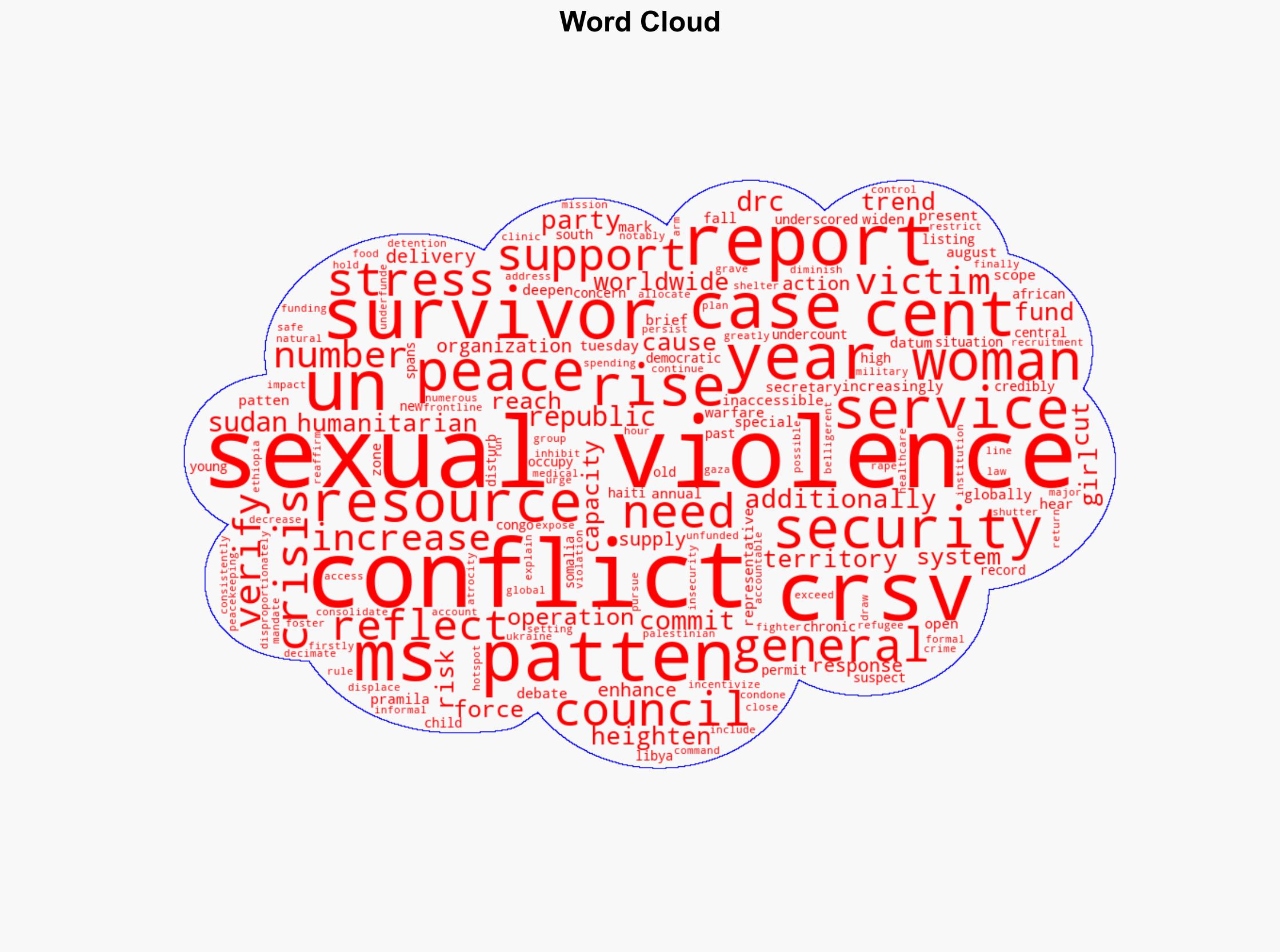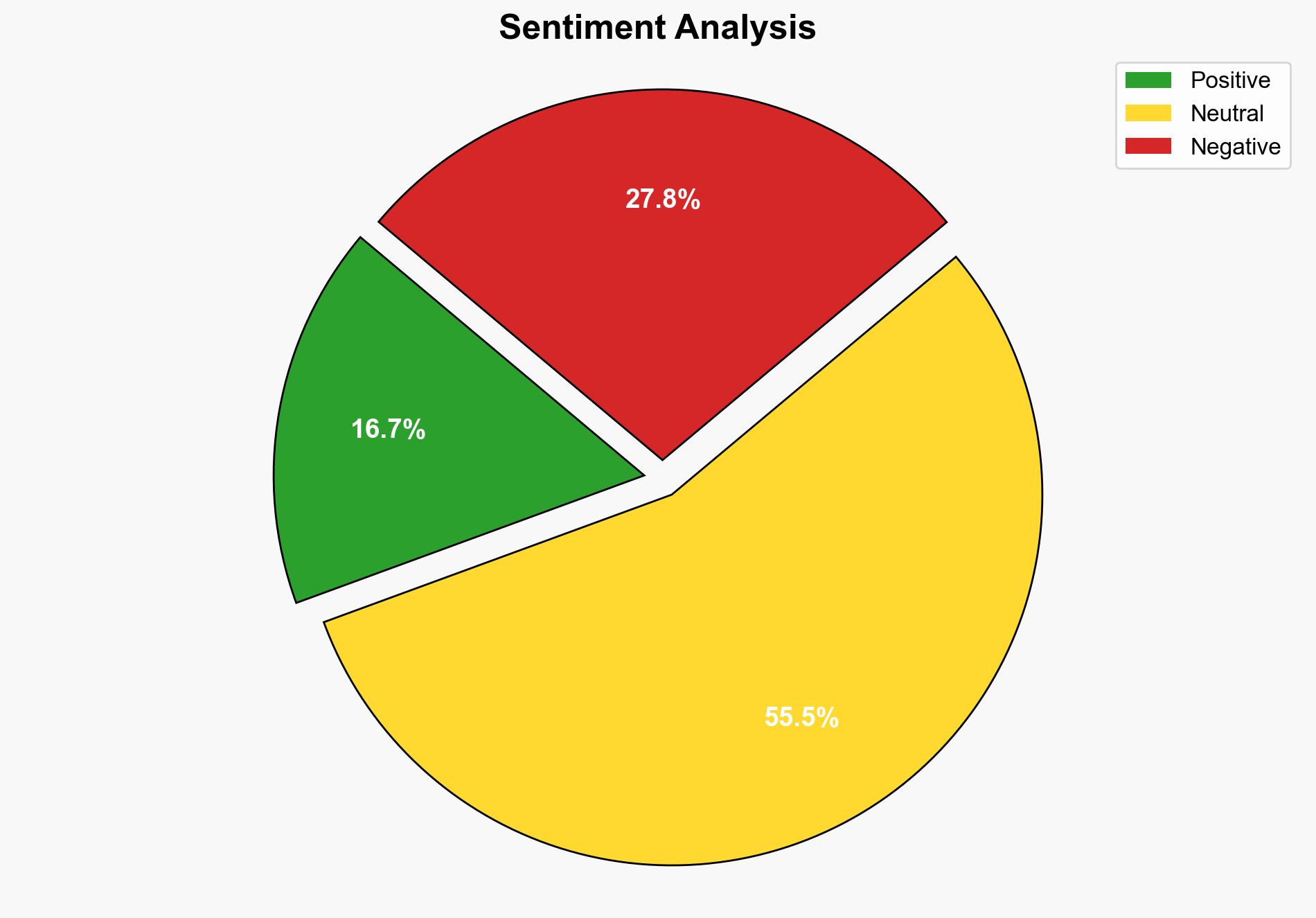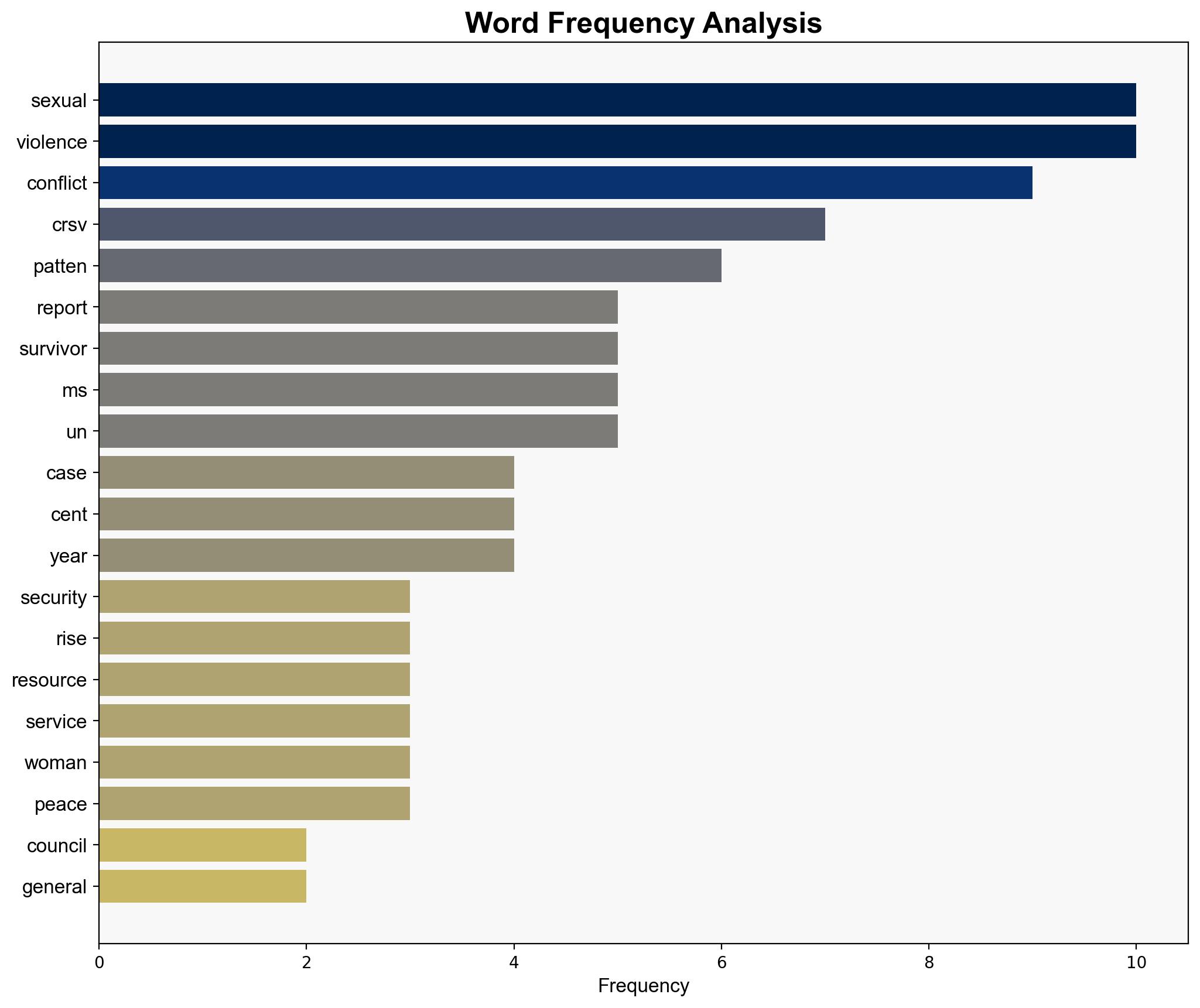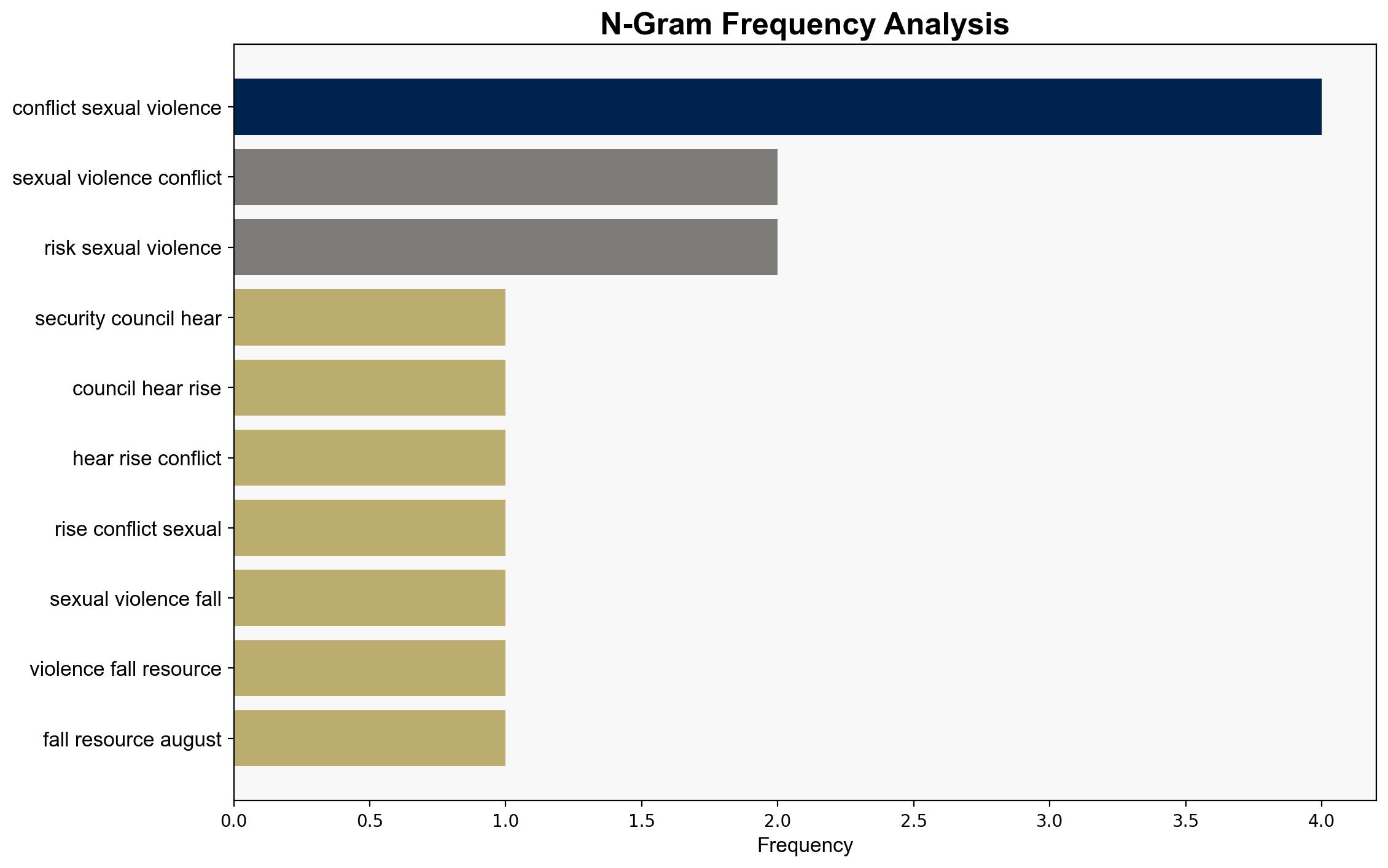Security Council hears about rising conflict-related sexual violence amid falling resources – Globalsecurity.org
Published on: 2025-08-20
Intelligence Report: Security Council hears about rising conflict-related sexual violence amid falling resources – Globalsecurity.org
1. BLUF (Bottom Line Up Front)
The most supported hypothesis is that the increase in conflict-related sexual violence (CRSV) is primarily driven by the strategic use of sexual violence by armed groups to consolidate control over territories and resources, compounded by reduced international resources and support. Confidence level: Moderate. Recommended action: Prioritize international funding and support for CRSV prevention and survivor assistance, and enhance accountability mechanisms for perpetrators.
2. Competing Hypotheses
1. **Hypothesis A**: The rise in CRSV is primarily due to the strategic use of sexual violence by armed groups to consolidate control over territories and resources, exacerbated by reduced international resources and support.
2. **Hypothesis B**: The increase in CRSV is largely a result of deteriorating socio-economic conditions and displacement, which heightens vulnerability and reduces access to protective services.
Using ACH 2.0, Hypothesis A is better supported due to the specific mention of armed groups using sexual violence as a tool for control and recruitment, alongside the strategic implications of resource scarcity. Hypothesis B is plausible but less supported by direct evidence in the source text.
3. Key Assumptions and Red Flags
– **Assumptions**: It is assumed that all reported cases of CRSV are accurately verified and that the data reflects a comprehensive picture of the situation. It is also assumed that international funding cuts directly impact CRSV prevention and response capabilities.
– **Red Flags**: Potential underreporting of CRSV due to stigma or lack of access to reporting mechanisms. The report’s reliance on data from conflict zones with limited verification capabilities could skew findings.
4. Implications and Strategic Risks
The increase in CRSV poses significant humanitarian and security risks, potentially destabilizing regions further and undermining peace efforts. The strategic use of sexual violence by armed groups could lead to increased recruitment and territorial control, exacerbating conflicts. Reduced international resources may hinder effective response and accountability, emboldening perpetrators and potentially leading to an escalation in violence.
5. Recommendations and Outlook
- **Mitigation**: Increase international funding and support for CRSV prevention and survivor assistance programs. Strengthen accountability mechanisms for perpetrators through international legal frameworks.
- **Opportunities**: Leverage international partnerships to enhance data collection and verification in conflict zones.
- **Scenario Projections**:
- **Best Case**: Increased funding and international cooperation lead to a reduction in CRSV cases and improved survivor support.
- **Worst Case**: Continued funding cuts and lack of accountability result in widespread CRSV, destabilizing multiple regions.
- **Most Likely**: Incremental improvements in some areas with persistent challenges due to resource constraints and strategic use of CRSV by armed groups.
6. Key Individuals and Entities
Pramila Patten, Special Representative on Sexual Violence in Conflict.
7. Thematic Tags
national security threats, humanitarian crisis, conflict resolution, international cooperation





